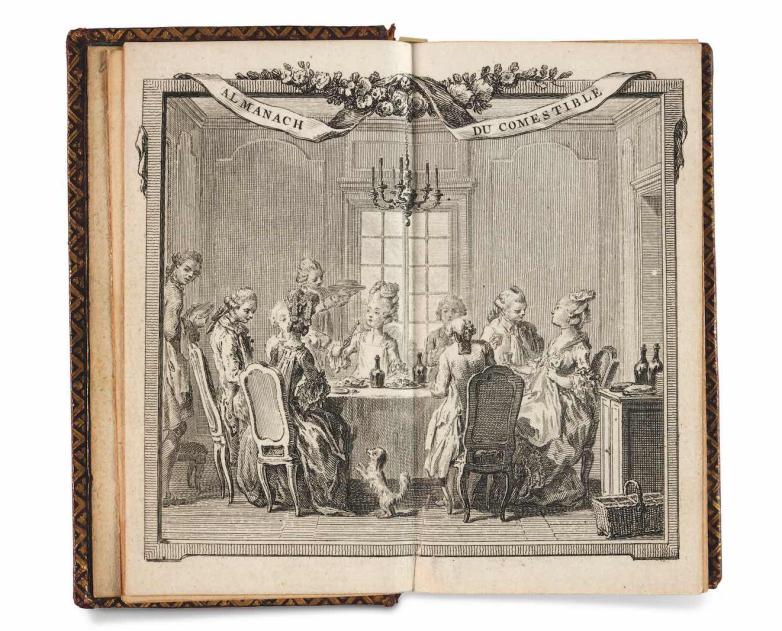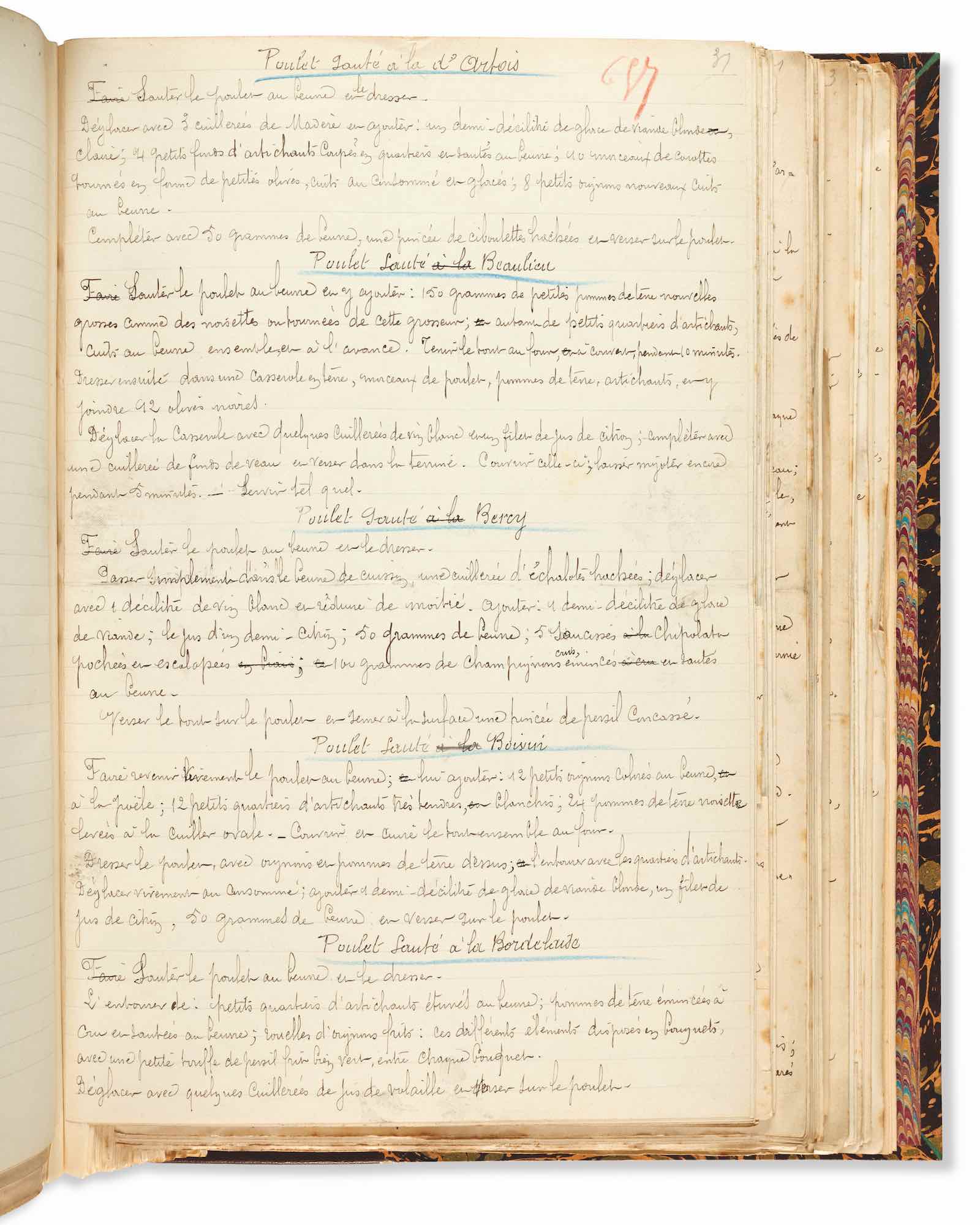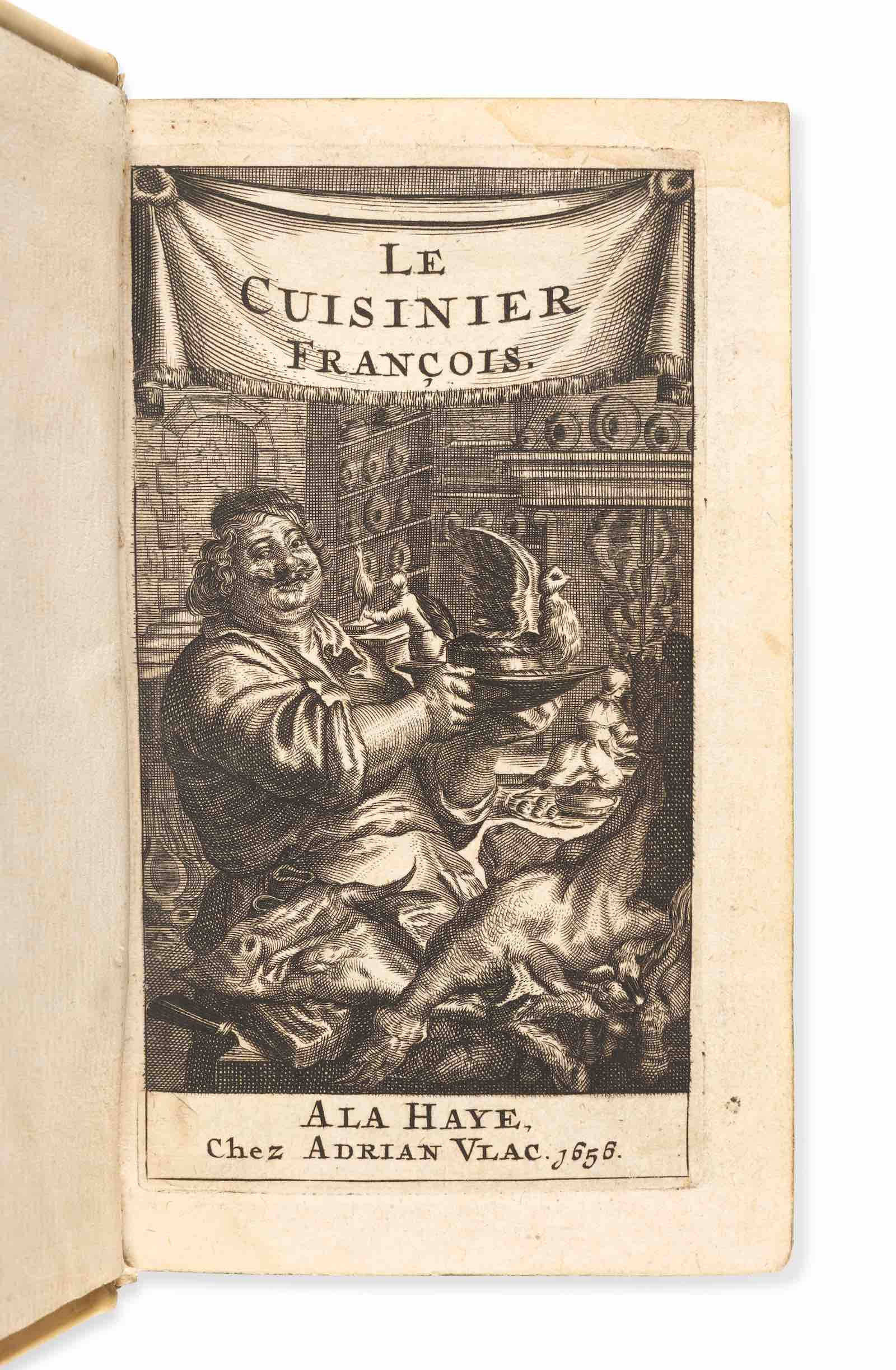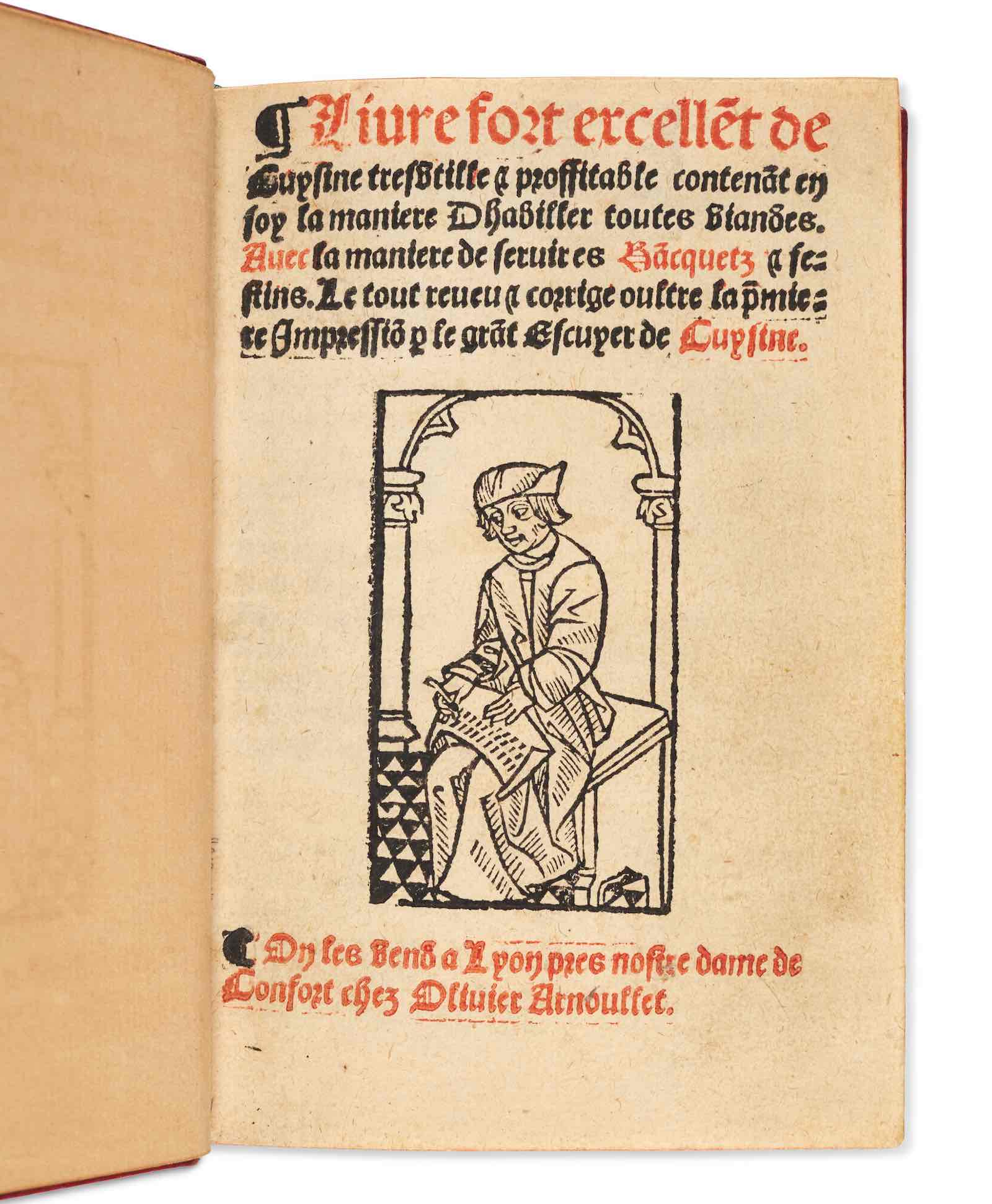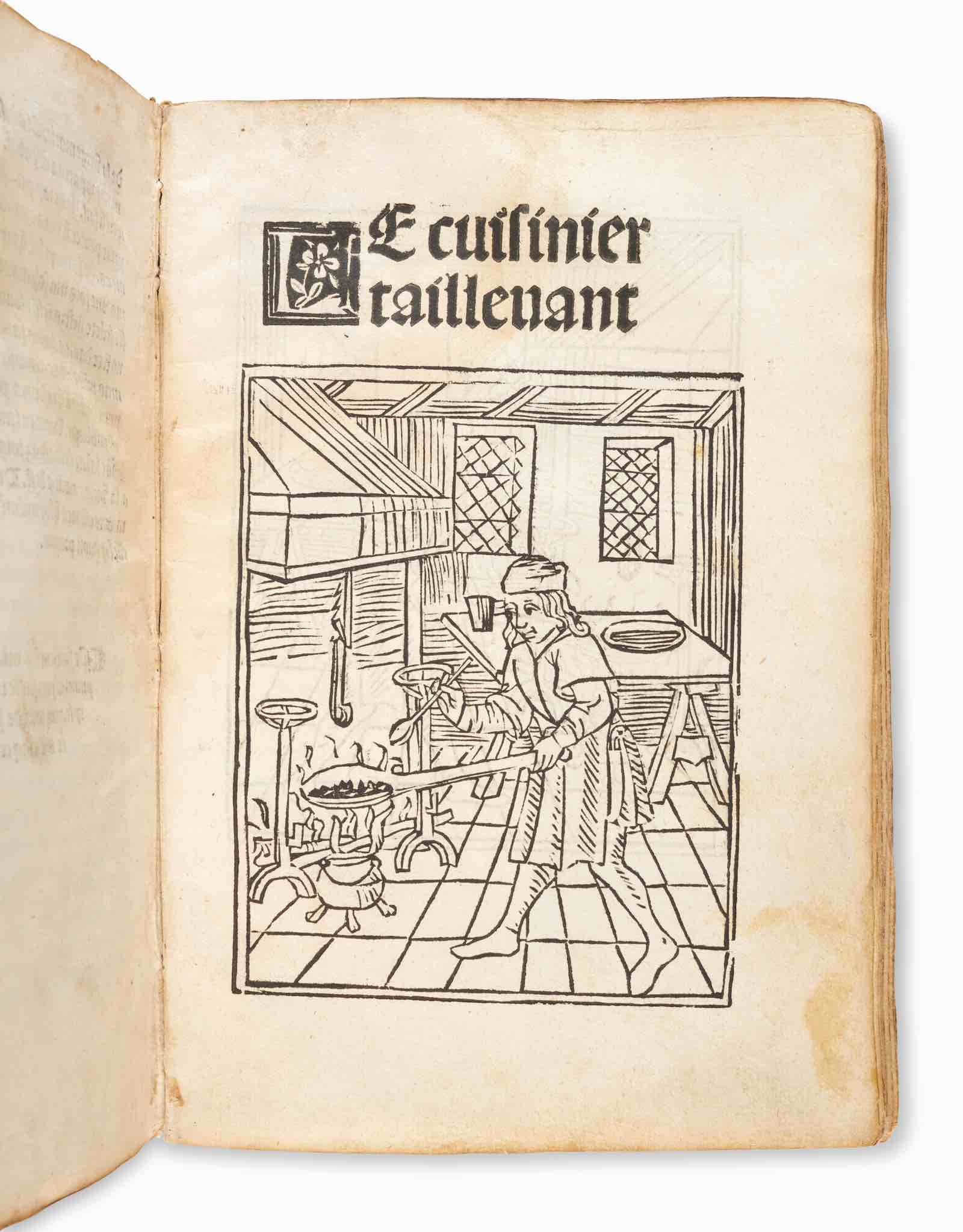Le Platine en françois, printed in 1505, is the French version of a treatise on cooking and dietetics published in Rome in 1474 by the humanist Bartolomeo Sacchi, known as Platina. De honesta voluptate et valetudine is a monumental work that had a very wide intellectual impact during its time. It revolutionised cooking by combining the joys of eating with dietetic rules. It would become Taillevent’s most formidable competitor, and its reign went on to span more than a century.
It was not until Le Cuisinier françois, a 1651work by François Pierre (also known as La Varenne), that the customs inherited from medieval cuisine were brought to an end and the foundations of modern French cuisine were laid. Now presented for sale, this volume included for the first time a number of recipes and procedures that are nowadays well-known to modern readers, such as the first recipes for snow eggs and puff pastry.
Cuisine and medicine frequently appear alongside each other in treatises on the art of living well, which is why the library of Baron Pierre de Crombrugghe includes a 1531 edition of Tacuini sanitatis by Ibn Butlan, a doctor from Baghdad. This richly illustrated volume comprises almost 300 woodcuts, which depict familiar scenes of gluttony, inebriation, food platters and even kitchen utensils.
In 1687, in Le bon usage du thé, du caffé et du chocolat, pour la preservation & pour la guerison des maladies, Nicolas de Blégny extolled the therapeutic virtues of “exotic” drinks – tea, coffee and chocolate – recently introduced to France. This much sought-after treatise was published at the same time that the first cafés were opening their doors in Paris.
One of the most extraordinary items in the collection is a second edition of Escoffier’s Guide culinaire, a substantial five-volume working manuscript. Following the original edition published in 1903, Escoffier began work on a new, expanded edition of his pioneering work, still considered the cornerstone of French cuisine to this day. Sauces, desserts, hors d'oeuvres, soups, pâtés, roasts: everything is accounted for in the thousands of recipes he wrote up based on his experiences at the Savoy and the Ritz. For Auguste Escoffier, cooking, “while an art, will become a science and will have to submit its formulas – still too often based on experience – to a method and a precision that will leave nothing to chance.”
His guidance modernised gastronomy. In the 17th and 18th centuries, culinary books and treatises were aimed at elites, be they royal, princely or aristocratic. From the 19th century onwards, publications gradually diversified and were aimed at a wider audience.

